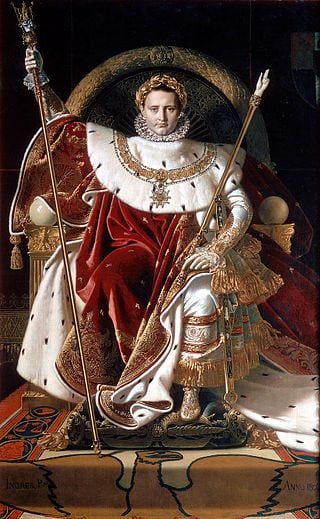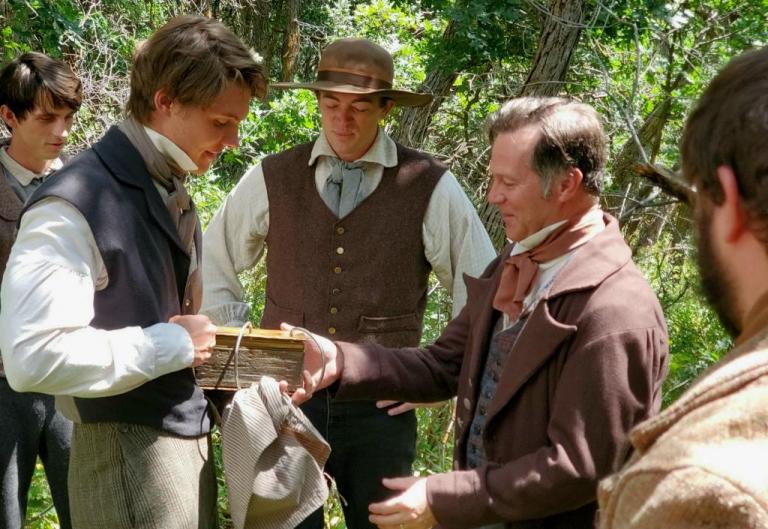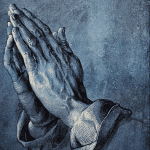
Somehow, I failed to call attention here to this little essay, even though it was published in Meridian Magazine a full week ago. Incidentally, too, just to clear up any confusion, despite the title of the article (which, I admit, could easily mislead many readers) it is not an entry taken from my wife’s diary: “On Choosing Prince Charming”

William Linn’s book was the least original of the three. Linn summarized current knowledge without advancing anything new about the origins of the Book of Mormon or the nature of Mormonism. He adhered to the standard Spaulding theory about the book’s origins. It was obvious, Linn thought, “some directing mind,” other than Smith’s “gave the final shape to the scheme.” The mastermind behind the text and the Golden Bible hoax must have been Sidney Rigdon building on the romance by Solomon Spalding. Unlike Linn, Riley and Dougall found the Spalding hypothesis unconvincing. Riley spent over twenty-five pages minutely analyzing the “Spaulding-Rigdon Theory.” He went through the hypothesis point by point, noting the lack of evidence and concluding that “these marks of the book are not the marks of the man Rigdon.” Dougall dismissed the theory summarily, observing “that it [Book of Mormon] was an original production seems probable.”The abandonment of the Spaulding-Rigdon hypothesis by two serious writers turned Mormon studies in a new direction. If Rigdon was not the mastermind behind the Book of Mormon, Joseph Smith must have been, and how could that be explained? How did this unprepossessing treasure-seeker compose such a complex text? That question compelled observers to speculate about Joseph Smith’s mentality and temperament. What were the psychic sources of his visions and revelations? Abner Cole and Eber D. Howe, the first of the serious critics, saw no need to investigate Smith’s mentality. They borrowed motives and mentality from historical stereotypes. Smith was an impostor and confidence man like other charlatans who troubled human society. With Rigdon gone and Smith the author of Mormonism, Dougall and Riley needed a more encompassing explanation. Both asked what light the newly emerging science of psychology might throw on visions and revelations.Although addressing the same question, the two took different approaches. Riley claimed that Smith obviously suffered from epilepsy. His description of the First Vision with its darkness and his inability to speak, followed by a bright light and then release could not have been clearer. Riley traced the inclination to mental disturbances back through the family line, finding that the Smiths had been mentally impaired for generations. Although cognizant of developments in psychological science, Lily Dougall took a more humanistic approach. She talked to William James about Smith’s visions not long before James’s Gifford Lectures at the University of Edinburgh, which became The Varieties of Religious Experience. Dougall blended art with science, aiming to imagine Smith’s psychology artistically rather than scientifically.Dougall also wrote from a theological position. She spent her life breaking free from the strictures of her evangelical Christian father’s hard-edge Christianity. She gravitated toward modernist doubts about miracles and to broad church toleration of a wide range of Christian beliefs. She wanted to respect Mormons, even while distancing herself from their irrational belief in miracles and revelations. She was aware of the polemical, moralist tradition that preceded her. In her candid introduction, she acknowledged that “it has been earnestly suggested to me that to write on so false a religion in other than a polemic spirit would tend to the undermining of civilised life.” (91-92)
Riley’s epilepsy diagnosis appealed in a time when physiological psychology seemed like a promising path for psychic research, but its range was limited. Epilepsy was of no help in understanding the gold plates. Riley had nothing to say about how the plates figured in Smith’s psychic economy. The epilepsy diagnosis, moreover, was tied to fashions in psychological research. At the time, epilepsy was also offered as an explanation of St. Paul’s Damascus vision too. As early ambitions for a broad application of the syndrome lost traction, their usefulness in understanding Joseph Smith faded as well. (95)
Professor Bushman also introduces Vardis Fisher, a writer who emerged from a Latter-day Saint background in Idaho, and his prize-winning 1939 novel Children of God:
Fisher and Dougall did their best to imagine what it meant subjectively to see God and write the Book of Mormon. The natural tendency of storytelling was to present an empathetic account, allowing the lead characters at least a measure of sincerity. To imagine them as duplicitous from the start would reduce interest in their fate and cast a long shadow over the rest of the story. Fisher balked, however, when it came to the plates. It was one thing to imagine a vision of God or even an aspiration to write the history of the Indians. It was another to pretend to poessess golden plates. After Joseph tells his family about his vision of the plates, Fisher has Joseph’s father express belief in their reality, warning Joseph to take care that the records not be stolen. At this point, Joseph must decide to go along with his father’s naive faith or tell him that they were not a material reality, that he “would visit the records only in a vision.” At the crucial moment, Joseph “let the opportunity pass” to tell the truth. He implicitly confirmed his followers’ belief that “he would visit a hill and open a vault and look with mortal eyes upon plates of gold.” Rationalizing the deceit to himself, Fisher’s Joseph reflects that “perhaps, indeed, the plates were real; for in this, as in many other matters, he was still uncertain.”Dougall likewise begins with a Smith who believes in his own plates but at the end has him confess his doubts. After one of her appeals for him to listen to reason, Joseph confesses to Susannah that he may not have seen the gold plates at all; they were just bricks. “As to them plates, I told you before I didn’t have them as much in my hands as I said I did. I got wrong a bit there too.” As from the beginning, the plates were the hinge between two understandings of Joseph Smith, sincere visionary or deceitful fraud. (96-97)
Many years ago, a friend who knew something about the story of the early Restoration but didn’t believe in it asked me why the plates were necessary if, as some sources seem to suggest, they weren’t required to be right at hand while Joseph Smith was dictating. I responded then, and I still believe, that they were necessary in order to force the choice between “sincere visionary” and “deceitful fraud.” I told him that they were an “absolutely indigestible lump in the throats of people like yourself,” who wish to be friendly and sympathetic but who won’t believe. Prophet or fraud. The middle ground, if any exists at all, is very, very limited.













